December 15th, 2014

The holiday season is typically a busy season for hackers and malware developers. With increased activity online because of online shopping, ecards, emails and more holiday festivities, there are also increased opportunities to infect users with viruses or steal their information. A post at Spyware News details some common methods used to victimize users around the holidays in the past. Here are three to watch for this year.
Think about all the website you visit for the holidays. You may buy airline tickets, book a hotel and order gifts in one afternoon. You’ll also likely be checking you bank accounts during this spending spree. Unfortunately, cyber criminals know that there are millions of other people like you spending money online and they know you’re always looking for a great deal. That gives them the opportunity to make fake websites, or spoof legitimate sites like your bank, in order to infect your computer or steal your payment information. Spotting a fake site can be difficult, depending on how much time has gone into crafting it. An old version of the company’s logo, typos or a missing security step could clue you in. It’s also important to keep your browser and antivirus program updated since they can sometimes alert you to a suspicious website.
Spam coming to your inbox isn’t a problem specific to the holidays, but there are some scams that attempt to use your excitement for the season against you. Many users are directed to the fake websites mentioned above after receiving an email promising a great deal or telling them they’ve won a contest. As always, following links in your email is a risky business. Be especially wary of attachments because that’s a common method for delivering malware. It sounds easy enough to not open attachments, but they’ll be labeled with something enticing that will be difficult to resist.
Not everyone does all of their shopping online. There are still plenty of folks who go out to get their shopping done, but there are dangers there too. Free WiFi at department stores or coffee shops is a convenient way for you to use your smartphone while shopping, but they also allow those with a little know-how to monitor your activity and steal your information. Never make purchases or enter passwords while on a public, unsecured connection.
If you are online during the holidays this year, you’re likely to encounter at least one of these tactics. Staying safe involves have an updated antivirus program installed and being cautious with your activity.
If you do fall victim to one of these attacks, call Geek Rescue at 918-369-4335.
August 18th, 2014

Cryptowall is the latest ransomware malware to be claiming victims. Much like CryptoLocker, Cryptowall encrypts the files on a victim’s computer and demands a payment to decrypt those files. This malware is usually spread as an attachment on spam emails. A post at Spyware News details the Bank of America email scam that’s currently spreading Cryptowall.
If you’re not a Bank of America customer, it’s easy to ignore messages claiming to be from the bank about your account. Those that do have active accounts find the messages more believable, however.
Users are reporting seeing emails claiming to be from Bank of America with an attachment. The emails are from “Andrea.Talbot@bofa.com” and advises the user to open the attachment because it contains information about their account. The email contains an office phone number and cell number with an 817 area code and even includes a standard confidentiality notice at the bottom. The email appears to be legitimate except for the fact that no bank, much less on the size of Bank of America, would send confidential account information to customers this way.
The attached file is named “AccountsDocument.zip” but those that download it quickly discover that it’s malware. Specifically, it’s the Cryptowall virus that encrypts files.
For the time being, be extra cautious about opening any emails from Bank of America and don’t download any attachments. If you have questions about an email, always contact the institution named in the email directly, rather than downloading attachments or following links provided.
Unfortunately, if you’ve become infected by Cryptowall, or a similar virus, there’s often no easy way around it. If you’ve recently backed-up your system, you can restore the encrypted files after the malware has been removed. Otherwise, you may not be able to recover the encrypted files.
If your device is infected with malware of any kind, call Geek Rescue for help at 918-369-4335.
For business solutions needs, visit our parent company JD Young.
July 30th, 2014
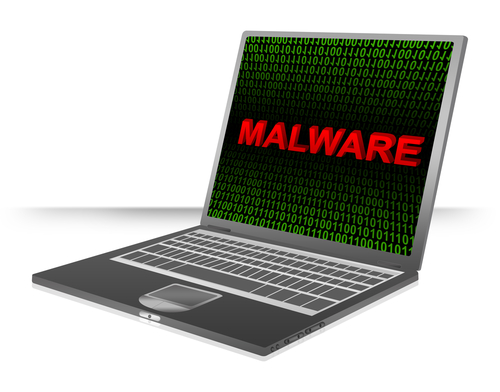
Even with up to date security tools in place, every internet user runs a constant risk of being hacked or infected with malware. Early detection of these issues can save you from a devastating outcome. InfoWorld recently published an article detailing some of the most common and easily spotted signs of malware infections and the action you should take to combat them. Many times, the suggested action is to restore your system to the last known safe point so it’s important that you’re regularly backing up your devices and creating good restore points.
While there’s fewer instances of this tell-tale sign of an infection than in the past, it remains one of the most recognized. Fake antivirus messages can pop up from your desktop or in a browser window. They claim to warn you about malicious files, but in reality the damage has already been done. Malware has already been added to your system. The message exists to entice you into more trouble. Clicking on it often opens a browser window that asks users to purchase security tools. These sites look legitimate, but are actually just a means to steal credit card numbers. The first step for users is to be familiar with what their actual antivirus messages look like. If they see a fake one, power down and restart in safe mode. Try to find the new applications that have been added and remove them. You’ll also want to run a full virus scan.
To be clear, not every browser toolbar is malicious. Google, Yahoo and other legitimate vendors all offer toolbar additions for browsers, but there are scores of toolbars that signal an infection. If you don’t recognize the name associated with the toolbar and don’t remember adding it, your system has likely been compromised. Most browsers offer ways to quickly remove unwanted toolbars and extensions, but some are trickier. You may need to restore your browser to a previous point or restore your entire system.
This often comes in tandem with unwanted browser toolbars. Conducting searches sends you to an unrecognized search engine, which often contains links to sites designed to further infect your device. You may also notice your homepage change. If this is happening, you’ll want to follow similar steps as above. Remove toolbars and other recently added applications, which may require restarting in safe mode.
- Fake Emails Sent From Your Account
If this hasn’t happened to you, you’ve surely received these emails from a contact. It’s a common problem for an email to be hacked and spew spam to the entire address book. What many users don’t know is that this is usually done through a malware infection on your computer. As soon as you notice emails you didn’t personally send in your sent folder, or are alerted by friends that you’ve sent them spam, you’ll want to run a full scan. Then, look around for recently added programs or anything that looks out of the ordinary.
In short, if your device is acting strangely, which can include pop ups, mouse movements, programs being added and more, it’s likely because of malware.
For help removing malware from any of your devices or to improve security, call Geek Rescue at 918-369-4335.
For your business solutions needs, visit our parent company JD Young.
July 21st, 2014

Spam is a well-known problem for email users. In the past couple of years, it’s also become a problem being distributed over text messages on smartphones. Now, as Adam Clark Estes reports for Gizmodo, iPhone users have to be wary of spam being sent via iMessage.
Security firm Cloudmark recently warned users about iMessage spam. That warning seems to have been issued because of a massive spam campaign that aims to sell counterfeit goods to consumers.
Links are sent to users via iMessage directing them to websites dedicated to promising name brand goods, like Oakley and Ray-Ban sunglasses and Michael Kors bags for low prices. While some sites of this nature are designed to steal credit card and other personal information or infect users with malware, it appears these sites actually do deliver the goods. But, they’re not legitimate.
Currently, the campaign has only targeted users in the biggest cities in the US. The spam has been spotted in New York City, Los Angeles, San Diego and Miami. In fact, this campaign alone has reportedly accounted for nearly half of New York City’s SMS spam, which includes spam being distributed via text message.
There are good reasons why spammers would want to use iMessage for their campaigns, rather than text messages and email. With email, most users have effective spam filters that prevent them from ever seeing the message. Text messages cost spammers money, especially if they’re sending them internationally. Meanwhile, iMessage is free to use and allows for the targeting of users with little to no security in place.
While this particular campaign may not have targeted your area, you can be sure that iMessage spam is a growing trend. Be wary of any messages received from someone not in your contacts and don’t click on links sent to your smartphone unless you know what they are.
If your device has been attacked or infected with malware, bring it to Geek Rescue or call us at 918-369-4335.
June 26th, 2014

A well-known online scam is directing users to malicious websites by sending them emails claiming to contain links to en e-card. Usually, the goal of these scams is to infect users with malware, but as Sean Butler reports for Symantec, the latest scam attempts to steal users’ money by promising a get rich quick scheme.
The email messages used in the scam appear to be sent from a legitimate e-card website, 123greetings.com. It contains only one sentence with a link to supposedly view your e-card. In most scams of this nature, this link would take you to a website where malware would be downloaded to your device. In this case, however, you are delivered to a site that’s made to look like 123greetings.com. Instead of malware, users are met with a long message that appears to be from a friend urging you to take part in a get rich quick scheme.
This spoofed version of the e-card site was only registered on June 17, according to WhoIs. From that site, users are sent to several other sites that all attempt to verify the authenticity of the ‘business opportunity’. Users are promised the chance to make thousands of dollars each week, but there’s a significant catch. It requires an initial payment of $97.
In addition to stealing a user’s money, contact details are also obtained, which could allow the spammers to attack the same individuals in future scams.
It’s never a good idea to follow links sent in unsolicited emails, but there are additional clues that this particular email isn’t legitimate. Most notably is the use of URL shorteners. Actual emails from 123greetings, aside from including much more than a lone sentence and link, include the full length with their domain name. The emails sent as part of this scam are shortened to obscure the true URL.
For additional tools that keep malicious emails like this out of your inbox, or for help recovering from a malware infection, call Geek Rescue at 918-369-4335.
June 4th, 2014
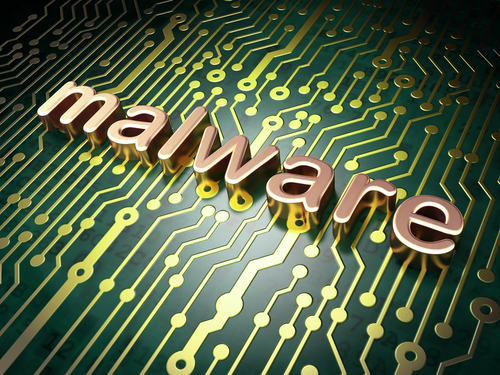
Cryptolocker unveiled itself in 2013 as one of the worst malware threats on the web. Victims saw their files encrypted only to be released after a ransom payment was made, and even then sometimes the files would remain inaccessible. A new spam email scheme, as reported on the Symantec blog, uses the Cryptolocker name, but actually infects users with another form of crypto malware.
While the malware used in this attack isn’t Cryptolocker, it performs similarly. Users’ files are encrypted and a ransom is demanded. The use of the Cryptolocker name is perhaps to convince users that there’s no way around the encryption. Cryptolocker uses notoriously difficult, or nearly impossible, to break encryption. While this threat’s encryption hasn’t been closely analyzed, it’s likely that it hasn’t been crafted as carefully.
The attack begins with an email arriving appearing to be from an energy company. Users are told that they have an outstanding debt on an electric bill. That should be the first clue for most users. In this sense, this particular threat is more believable than others. Many companies, including electric providers, often send an email to customers telling them their latest bill is ready.
The message contains a link supposedly allowing users to view their bill. It directs them to a website containing a CAPTCHA. The number you’re directed to enter never changes, however. From there, users arrive on a page with a link to download their bill. It downloads as a file disguised as a .PDF. Again, this is all fairly believable.
Opening that file, however, immediately causes files to be encrypted and a text file pops-up informing the victim that they’ve been hacked with Cryptolocker. They’re informed to send an email to a provided address to start the ransom process.
There’s an added feature to this attack also. The malware checks to see if the user is running email client Outlook or Thunderbird. If you are, your contact list is stolen and sent to the attacker, presumably to help spread the malware to more users.
As with any other crypto attack, the key is to avoid infection. Once your files are encrypted, it’s extremely difficult to unlock them. Avoid these threats by being extremely cautious about following links in emails and downloading attachments. Also, regularly back-up your important files in case they’re encrypted or corrupted.
For help recovering from a malware infection, call Geek Rescue at 918-369-4335.
June 3rd, 2014
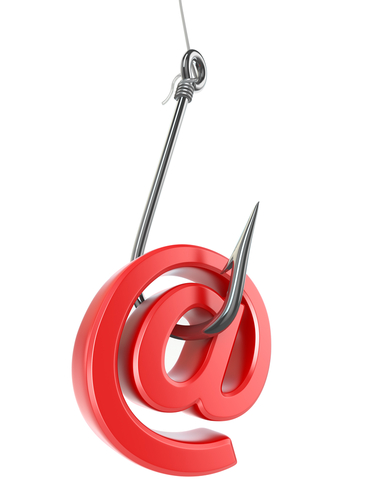
About two months ago, the Heartbleed bug was the scourge of the internet. Since then, websites have scurried to update and patch the vulnerabilities that could potentially lead to the theft of their users’ data. As Jeremy Kirk of Computer World reports, the Heartbleed name is still being used to strike fear into users only now it’s in association with a phishing scam.
Security firm TrendMicro reports that spam emails are being distributed that promise a “Heartbleed removal tool”. Individuals who have some understanding of what Heartbleed is will understand that it isn’t a virus or malware that can simply be removed. But, others who are familiar with the name ‘Heratbleed’ but unfamiliar with any other details are being fooled.
The attachment to these emails, the supposed removal tool, is actually a keylogger, which is used to record the keystrokes of the user and sends them to the criminal who launched this attack.
Given the apparent misunderstanding of Heartbleed, this scam is already poorly constructed, but it falls apart even more when you consider the content of the email. While the body contains a warning about Heartbleed and urges users to run the attached removal tool, the subject line reads “Looking For Investment Opportunities from Syria”. A more spammy email subject has rarely been written and, of course, the subject and body don’t match.
These characteristics make this particular scam easy to spot for users and spam filters, but criminals trading on the Heartbleed name isn’t likely to stop anytime soon. Be wary of any email, even those purporting to be from legitimate companies, that advises you to protect yourself from Heartbleed. Don’t follow links in those emails and don’t download the attachments.
If your computer is infected by malware, Geek Rescue is here to help. Call us at 918-369-4335.
May 22nd, 2014

Spam is a constant problem for email users and has been since the early days of email. Through spam, malware infections and phishing schemes torment users. Unfortunately, as Malcolm James reports for the All Spammed Up blog, the spam problem in the US is getting worse.
A report released by antivirus manufacturer Kaspersky that users in the United States receive more malicious emails than any other country. At nearly 14-percent of the world’s spam, the US leads this category by almost a full 4-percent over second place United Kingdom.
Over the past few months, the US has seen a sharp increase in spam emails. In the third quarter of 2013, US email users received about 10-percent of all spam, while users in the UK received the most at about 12-percent.
One noticeable trend is an increase in spam targeting mobile users. Most notably, spammers have begun sending messages that appear to be from popular mobile app developers. Messaging app ‘WhatsApp’ has been used in a number of email scams to spread malware. Even users who have never connected an app to their email address have been fooled. For many users, these messages are believable enough that they’re opened and an attachment downloaded to investigate further. Unfortunately, that’s all the action a user needs to take for malware to infect their system.
Overall, about two-thirds of all email messages are categorized as spam. This is actually down from the end of 2013, but about the same as this time last year. Experts warn that the total amount of spam is less consequential than the tactics the spammers are using. New, more intelligent tactics are allowing more spam to slip through filters and find their way into users’ inboxes, which creates more opportunities for users to mistakenly open these messages.
Geek Rescue helps you recover from and protect from spam. We offer services to help get rid of malware and better filter spam. Call us to find out more at 918-369-4335.
May 6th, 2014
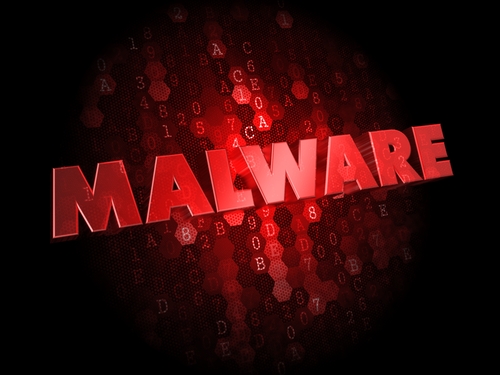
Once your computer is infected with malware, it can be a long, complicated process to remove it. An infected system is at risk for data loss and risks spreading the malware to other computers. The best security is to keep the infection from ever happening. To do that, you need to know where malware infections typically stem from. At Business New Daily, Sara Angeles lists the most common tactics taken by malware to infect users.
A decade ago, pop-up ads were common online and were a common way of spreading spyware and other malware. The use of pop-ups has significantly decreased over the years and online advertising has become much more legitimate. However, there are still plenty of malicious online advertisements that have the singular goal of infecting users. Sometimes referred to as malvertisements, online ads exist that are capable of infecting users without even a click. The display of these ads can be enough to install malware on your machine. Usually, these ads are found on less than reputable websites, but through an intelligent attack, they’ve been known to plant themselves on trusted sites from time to time.
The traits that make social media so popular are also the primary reasons why it’s often the route of attackers. Messages received on social media are trusted because they appear to be from a friend or recognized contact. There’s also the sheer number of users. An attacker has a better chance of seeing his malware spread to thousands or millions of users on social media than through other avenues. Facebook messages and Twitter DMs are common ways to spread malware, but there are also malicious Twitter accounts that tweet out spam and malicious website links.
Smartphones enjoyed a short period of safety from malware, but as the mobile audience has grown, so has the amount of malware targeting it. Android users are at a much higher risk of malware due to the operating systems open source nature, but iPhone users have seen their share of security scares also. Malicious apps that are either downloaded from a third party or infiltrate the official app store are usually to blame for a mobile malware infection. Malware can also be spread to mobile devices through text messages, emails or through infected websites.
Regardless of the number and effectiveness of security tools you have in place, an unsuspecting and uneducated user is likely to encounter plenty of malware. Even those that know not to click suspicious looking links or download apps from outside the official app store can be duped. Malware developers use social engineering to manipulate users and make links irresistible. They play off of current news stories and promise deals that are too good to be true. If it didn’t work, they’d stop doing it, but there’s no end to these tactics in sight.
Much like social media, nearly every internet user also has an email account. Malware is commonly spread as an attachment to spam messages that claim to be from a trusted business, website or government agency. Users who download these attachments have their computer infected with malware, and often end up spamming their entire address book with malware and malicious links. This is another problem as other users receive messages that appear to be from a friend and instinctively trust the contents.
Malware is becoming more intelligent. Recent attacks have been able to hide themselves from security tools or encrypt a user’s files.
If your device is infected with malware, bring it to Geek Rescue or call us at 918-369-4335.
April 30th, 2014
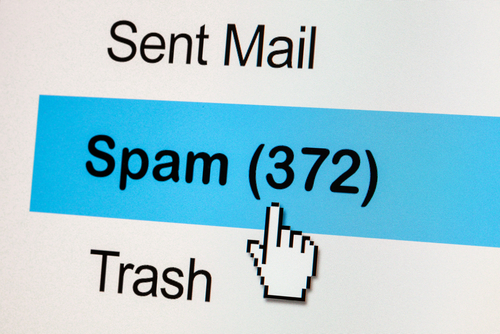
A popular method of attack for cyber criminals is to gain control of a legitimate email account and spam the user’s entire address book. This gives them a much better chance to infect more users as their spam emails appear to be from a trusted contact. This method is annoying when it’s highly targeted and affects only a few dozen email users. It becomes much more than an annoyance when potentially millions of users are affected. At CNN, Jose Pagliery reports on a hack on AOL that has potentially compromised millions of email accounts.
It’s not known yet exactly how many email users had their information stolen in this large scale attack on AOL. Currently, the company reports that only 2-percent of their email accounts have been observed spamming others. But, of their 120-million email account holders, anyone could be affected.
AOL also warns that it isn’t just the ability to spam your friends that’s at stake. The attack could also give hackers access to postal addresses, log-in credentials and answers to security questions.
This is such a large scale attack that everyone needs to be warned about it. With millions of contact lists at risk, nearly every email account in the US could be hit by AOL spam in the coming weeks.
There’s also the concern about abandoned AOL accounts being revived to send out spam. A significant number of AOL email accounts have been dormant for years. However, attackers are still able to gain access to these accounts and spam their contacts. Because this is a seldom used, and often forgotten about, account, it could take longer to mitigate the issue than an active account that a user checks every day.
AOL has successfully begun redirecting emails sent through these malicious methods into users’ Spam folders, but little else has been accomplished so far. All users with an AOL account, whether it’s being used currently or not, are advised to change their passwords as soon as possible. It’s also a good idea to change other important passwords that share commonalities with your AOL password.
If your computer or email has been the victim of an attack, or you’d like to learn about additional security and spam filter options, contact Geek Rescue at 918-369-4335.




















